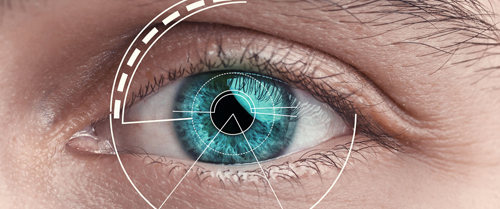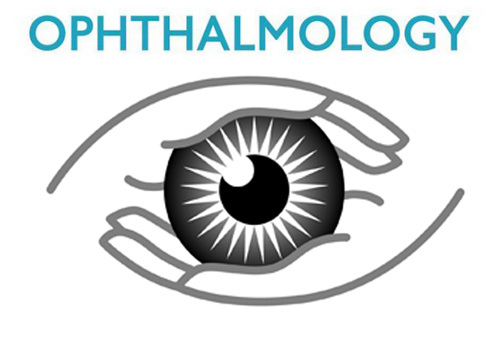
Ophthalmology worldwide health and medical information
Current Problems of Ophthalmology
The eye has a rich blood supply and a relatively small size, which make it particularly susceptible to a variety of drug-induced adverse effects. If discovered early, many of these adverse effects are reversible. If not detected, these adverse effects may cause irreversible damage to different parts of the eye, possibly resulting in a reduction or loss of eyesight.

Commonly Used Oral Drugs That Can Cause Eye Problems
This article discusses several oral medications that are commonly used, particularly among the elderly, and the specific eye problems that they cause. Learn about these medications to protect your eyes from harm.
Alpha blockers
Alpha blockers — including doxazosin (CARDURA) and tamsulosin (FLOMAX) — are used to treat benign prostatic hyperplasia (enlarged prostate) in men or hypertension.
They can cause a condition occurring during surgery for either cataracts (cloudy lens) or glaucoma (elevated pressure in the eye) that increases the risk of complications. Known as intraoperative floppy iris syndrome, this condition occurs because of atrophy (wasting) of the muscles in the iris and is characterized by constriction of the pupil and flaccid iris. It can happen in current and previous users of these drugs; therefore, patients undergoing eye surgery should tell their eye doctors if they have ever used these drugs.
Amiodarone (PACERONE)
A key drug for treating certain heart-rhythm disorders, amiodarone can cause microdeposits on the cornea in as many as 10% of users, resulting in blurred vision or visual halos (seeing colored circles around lights). The good news is that these deposits do not necessitate stopping this drug. These deposits can be reversed by reducing the dose of amiodarone.
Less commonly, amiodarone can cause serious degeneration and inflammation of the optic nerve (known as optic neuropathy or optic neuritis), usually resulting in visual impairment or permanent blindness. Therefore, regular eye examinations are recommended before and during treatment with amiodarone.
Antiepileptics
Two epilepsy (seizure) drugs can cause particularly risky eye-related adverse effects. First, topiramate (QUDEXY XR, TOPAMAX, TROKENDI XR) can block fluid flow in one or both eyes, causing acute angle closure glaucoma. This condition typically occurs within one month of starting this medication and can happen at any age. Symptoms may include sudden constriction or dilation of the pupil; decreased visual acuity or blindness; eye pain, redness or swelling; headache; and nausea or vomiting. Patients should seek immediate medical attention if they experience any of these symptoms. If the drug is stopped (which must be done under medical supervision to avoid triggering seizure reactions) and the condition is treated, pressure in the eye may return to normal in hours to days without the need for surgery. Importantly, topiramate also can cause visual field defects (blind spots) without glaucoma in some patients, although these defects usually resolve after the drug is discontinued.
Second, the drug vigabatrin (SABRIL, VIGADRONE) comes with a boxed warning — the strongest warning that the Food and Drug Administration (FDA) can require — regarding permanent severe vision loss (including retinal damage) in both eyes that can result in disability. Vision loss from this drug is unpredictable and can occur any time during therapy. Once detected, vision loss usually is not reversible even after the drug is discontinued. Therefore, eye examinations are recommended before starting vigabatrin and during therapy, as well as for up to six months after discontinuing it. It is expected that, even with frequent monitoring, some patients will develop severe vision loss.

Bisphosphonates
Bisphosphonates — such as alendronate (BINOSTO, FOSAMAX) and risedronate (ACTONEL, ATELVIA) — are used to treat osteoporosis (thinning of the bones). They can cause inflammation in various eye structures (including the iris and sclera [the white outer layer of the eye]), resulting in eye pain, redness or blurred vision. The severity of the inflammation increases with higher doses of these medications. However, these symptoms resolve after the drugs are stopped.
Corticosteroids
Corticosteroids — including dexamethasone (generic only), hydrocortisone (CORTEF) and prednisone (RAYOS) — are used to treat inflammatory and allergic conditions. Long-term use of these drugs can cause a variety of eye disorders, including cataract, glaucoma and retinal detachment (an emergency situation in which the retina pulls away from the layer that includes blood vessels). Importantly, these adverse effects occur with all forms of corticosteroids, including those taken by injection or inhalation, or applied topically. If signs of these adverse events occur during corticosteroid therapy, their risks should be weighed against their benefits to determine whether they should be discontinued. Discontinuation of corticosteroids should be done gradually to avoid withdrawal reactions.
Erectile dysfunction drugs
Erectile dysfunction drugs — including sildenafil (REVATIO, VIAGRA) and tadalafil (ADCIRCA, ALYQ, CIALIS) — carry a risk of sudden vision loss in one or both eyes because they can cause a serious problem involving the blood supply to the optic nerve. Patients should stop taking these drugs and seek immediate medical care if they experience sudden vision loss.
These drugs also can cause temporary impairment in discriminating blue and green colors, blurred vision or increased sensitivity to light. These adverse effects occur within an hour of taking these drugs and generally resolve over the next three to four hours.
Phenothiazine antipsychotics
The schizophrenia drugs chlorpromazine (generic only) and thioridazine (generic only) tend to cause minor transient visual changes: constriction or dilation of the pupil in the case of the former and blurred vision in the case of the latter. Both drugs also can cause pigmentary deposits on the lens, cornea and retina, resulting in decreased visual acuity and impaired night vision. These adverse effects seem to be related to the dose and duration of therapy. Therefore, regular eye examinations are recommended for long-term users of moderate or high doses of these drugs to determine whether their benefits outweigh their risks.
Rheumatoid arthritis drugs
Two rheumatoid arthritis drugs can cause eye-related adverse effects: auranofin (RIDAURA) and hydroxychloroquine (PLAQUENIL).
Because auranofin is a gold-containing drug, it can cause numerous minute deposits on the surfaces of the cornea or lens. Fortunately, these deposits are not associated with visual impairment, so they do not require discontinuing or reducing the dosage of the drug. These deposits usually disappear in three to six months after auranofin is discontinued.
Hydroxychloroquine can provoke irreversible damage to the retina, possibly resulting in visual disturbances, especially among patients taking high doses of the drug, those who have been using it for more than five years, those with kidney disease, those with disease involving the macula (central portion of the retina) and those taking tamoxifen (SOLTAMOX) at the same time. It is crucial to have eye examinations before starting and during hydroxychloroquine therapy. The drug should be discontinued under medical supervision if the retina is affected.
Always read the labels of your medications to see if they cause eye-related adverse effects, especially if you have an eye condition (such as glaucoma).

Conclusion
If any of your medications can cause eye-related adverse effects, undergo the specific eye examinations recommended by your doctor even if your vision seems fine. Such examinations can uncover eye damage early in many cases. Be vigilant about the specific symptoms of eye disorders and notify your doctor if they occur. Importantly, seek immediate medical care if you experience a sudden decline in or loss of your vision; do not assume that these symptoms will just go away.
Categories
- Allergy
- Alcohol Addiction
- Anxiety
- Cardiology
- Depression
- Dermatology
- Endocrinology
- Phlebology
- Diabetes
- Herpes Viruses
- Gastroenterology
- General Health
- Gerontology
- Hematology
- Hepatology
- Immunology
- Infectious Diseases
- Men's Health
- Neurology
- Obesity
- Oncology
- Ophthalmology
- Orthopedics & Sports Medicine
- Parasitic Diseases
- Pediatrics
- Psychiatry
- Radiology
- Respiratory
- Rheumatology
- Smoking Cessation
- Urology
- Women's Health